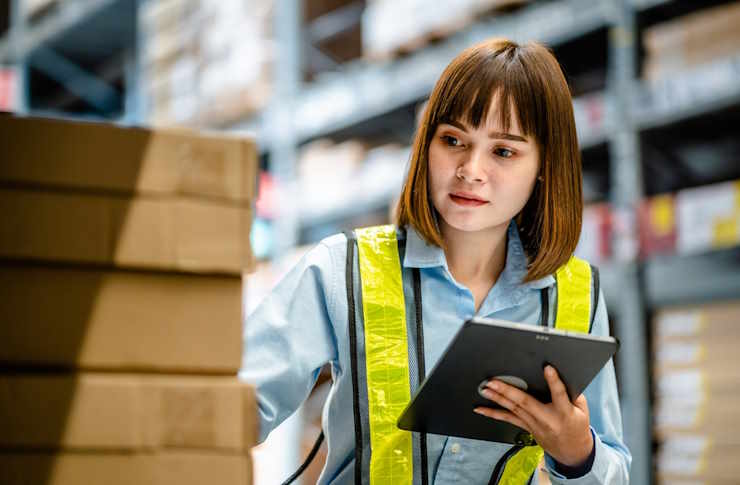Reverse Logistics: A Strategic Imperative for Modern Business
The intricate dance of supply chains has long been a focal point for businesses seeking operational excellence. Yet, as consumer behavior evolves and environmental concerns mount, a new frontier emerges: reverse logistics. This often-overlooked aspect of supply chain management is rapidly becoming a critical factor in business success, offering opportunities for cost savings, improved customer satisfaction, and enhanced sustainability.

In today’s business landscape, reverse logistics has evolved from a necessary evil to a strategic imperative. Companies are recognizing that efficient reverse logistics can lead to significant cost savings, improved customer loyalty, and a reduced environmental footprint. Moreover, as e-commerce continues to grow, the volume of returns has skyrocketed, making reverse logistics more crucial than ever.
The Economic Impact of Efficient Reverse Logistics
The financial implications of reverse logistics are substantial. Studies show that returns can cost retailers up to 20% of the original sale price of an item. However, businesses that implement effective reverse logistics strategies can recoup a significant portion of these costs. By streamlining return processes, companies can reduce transportation expenses, minimize inventory holding costs, and potentially recover value from returned products through refurbishment or resale.
Furthermore, reverse logistics can open up new revenue streams. For instance, some companies have created entire business units dedicated to refurbishing and reselling returned items, turning what was once a cost center into a profit generator. This approach not only improves the bottom line but also aligns with growing consumer demand for sustainable and circular business models.
Customer Experience and Brand Loyalty
In an era where customer experience reigns supreme, reverse logistics plays a crucial role in shaping brand perception. A smooth, hassle-free return process can significantly enhance customer satisfaction and loyalty. Conversely, a poor return experience can lead to negative reviews and lost business. By investing in efficient reverse logistics, companies can turn potential disappointments into opportunities to showcase their commitment to customer service.
Moreover, transparent and easy-to-understand return policies can actually boost sales. Studies have shown that customers are more likely to make a purchase if they know they can easily return the item if unsatisfied. This psychological safety net can be a powerful tool for increasing conversion rates, especially in e-commerce settings.
Sustainability and Corporate Responsibility
As environmental concerns become increasingly prominent, reverse logistics offers a pathway for businesses to demonstrate their commitment to sustainability. Effective reverse logistics can significantly reduce waste by ensuring that products are properly recycled, refurbished, or disposed of in an environmentally friendly manner. This not only helps companies meet regulatory requirements but also appeals to environmentally conscious consumers.
Some forward-thinking companies are taking this a step further by designing products with reverse logistics in mind. This “circular design” approach considers the entire lifecycle of a product, including how it can be easily disassembled, recycled, or repurposed at the end of its life. Such initiatives not only reduce environmental impact but can also lead to cost savings and innovation in product design.
Technology and Innovation in Reverse Logistics
The complexity of reverse logistics demands sophisticated technological solutions. Advanced analytics, artificial intelligence, and the Internet of Things (IoT) are revolutionizing how companies manage returns and recycling processes. For instance, predictive analytics can help anticipate return volumes, allowing for more efficient resource allocation. IoT sensors can track the condition of returned items, streamlining the sorting and refurbishment process.
Blockchain technology is also making inroads in reverse logistics, offering enhanced transparency and traceability. This can be particularly valuable in industries where authenticity is crucial, such as luxury goods or pharmaceuticals. By leveraging blockchain, companies can create an immutable record of a product’s journey, ensuring its legitimacy and potentially reducing fraud in the returns process.
Actionable Strategies for Optimizing Reverse Logistics
• Conduct a comprehensive audit of your current reverse logistics processes to identify inefficiencies and bottlenecks.
• Invest in user-friendly return portals that simplify the process for customers and provide real-time tracking.
• Implement data analytics to predict return patterns and optimize inventory management.
• Consider partnering with specialized reverse logistics providers to leverage their expertise and infrastructure.
• Develop a strategy for refurbishing and reselling returned items to recapture value.
• Train customer service teams to handle returns effectively, turning potential negatives into positive experiences.
• Explore innovative packaging solutions that facilitate easy returns while minimizing environmental impact.
As businesses navigate the complexities of modern commerce, reverse logistics emerges as a critical frontier for innovation and strategic advantage. By reimagining the return journey as an opportunity rather than a burden, companies can unlock new efficiencies, enhance customer relationships, and contribute to a more sustainable future. The path forward in reverse logistics demands creativity, technological prowess, and a commitment to continuous improvement. Those who master this often-overlooked aspect of business operations will find themselves well-positioned to thrive in an increasingly competitive and environmentally conscious marketplace.





